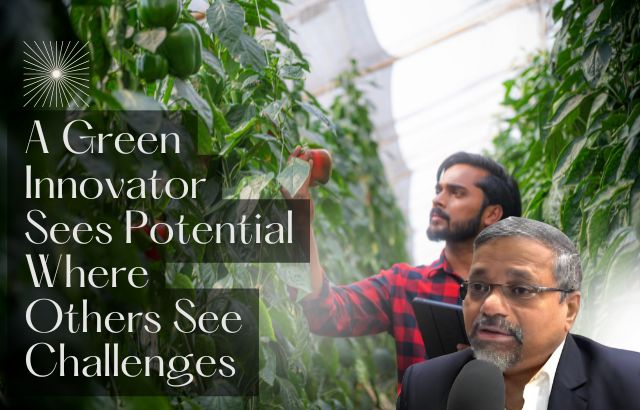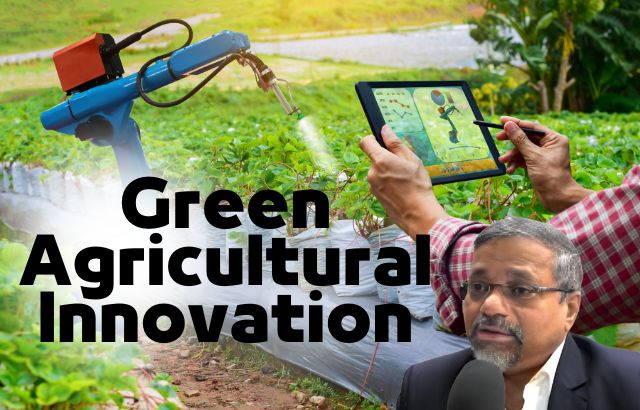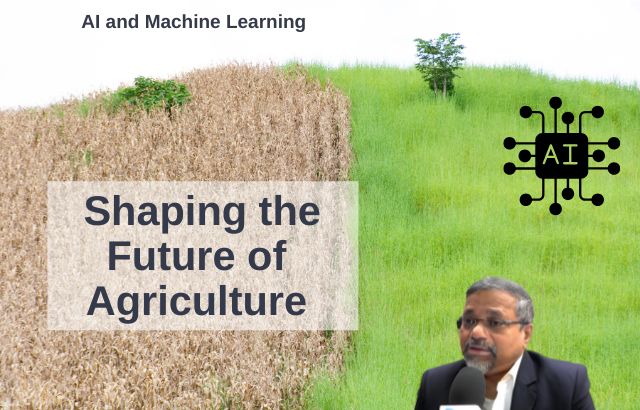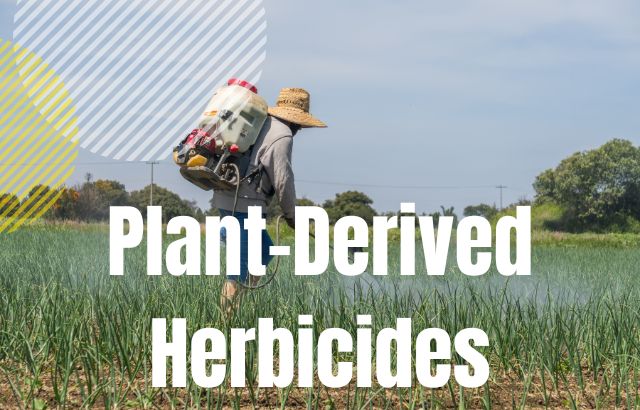Table of Contents
ToggleIn a world facing increasingly complex environmental challenges, the role of green innovators in agriculture is becoming crucial. While others may see obstacles, these innovators recognize opportunities for change, improvement, and sustainability. By adopting advanced green technologies, they help revolutionize the way we grow food, reduce environmental impact, and enhance productivity. Agriculture Green Innovators, like Jaiguru Kadam, are setting the stage for a new era of sustainable farming solutions that tackle pressing issues like climate change, resource scarcity, and food security.
The Role of a Green Innovator in Agriculture

Green innovators in agriculture are thought leaders who approach problems with creativity and a deep commitment to sustainability. Their role includes:
-
Identifying Sustainable Solutions: Green innovators focus on finding alternative solutions to harmful practices. They explore the use of eco-friendly alternatives to synthetic chemicals, energy-intensive practices, and wasteful methods.
-
Pioneering New Technologies: They develop and implement advanced technologies that reduce environmental impact while boosting productivity. This can range from AI-powered farming tools to bio-based products for crop protection.
-
Facilitating Knowledge Transfer: A green innovator shares knowledge and practical solutions with farmers, businesses, and policymakers to help them transition to greener methods and technologies.
-
Creating Partnerships: Collaborating with research institutions, governments, and corporations, green innovators work to develop scalable, sustainable solutions for agriculture that have far-reaching impacts on the global food system.
-
Measuring Environmental Impact: They continuously track, analyze, and improve the environmental impact of agricultural practices, ensuring that their innovations contribute positively to reducing carbon footprints, waste, and pollution.
Surprising figures:
-
Green Solvents: The global market for green solvents is expected to reach $10.5 billion by 2025, growing at a CAGR of 5.2%. This indicates the increasing demand for environmentally friendly alternatives to traditional petroleum-based solvents.
-
Green Surfactants: The green surfactants market is projected to grow to $10.1 billion by 2024, driven by rising consumer demand for non-toxic, biodegradable ingredients in everyday products like cleaning agents and personal care items.
-
Bioherbicides: The bioherbicides market is growing rapidly, with an expected value of $3.8 billion by 2027. This is due to the increasing shift from synthetic herbicides to natural alternatives that are less harmful to the environment.
Examples of Green Innovations in Agriculture
-
Green Solvents: Green solvents are gaining popularity as sustainable alternatives to traditional solvents that are harmful to human health and the environment. In agriculture, these solvents are used in pesticide formulations and crop protection products. For example, ethyl lactate is a bio-based green solvent that can be used in herbicide formulations. Unlike traditional chemical solvents, it is biodegradable, non-toxic, and derived from renewable resources such as corn or sugar.
-
Green Surfactants/Adjuvants: Surfactants are crucial in ensuring that agricultural chemicals, such as pesticides or herbicides, are spread evenly and effectively on plant surfaces. Green surfactants are derived from renewable plant materials, reducing environmental harm. For example, plant-based methyl ester sulfonates are a green surfactant used in pesticide formulations. These surfactants are biodegradable, have low toxicity, and ensure better performance with minimal environmental impact.
-
Plant-Derived Herbicides/Bioherbicides: Bioherbicides and plant-derived herbicides are natural alternatives to traditional chemical herbicides. One example is the use of allelopathic plants—plants that release chemicals to inhibit the growth of surrounding weeds. The use of Allelopathic extracts from plants like eucalyptus or mustard has been explored to control weeds effectively without the use of toxic chemicals.
-
Green Herbicide Safeners: Green herbicide safeners are products used alongside herbicides to protect crops from damage while ensuring effective weed control. These safeners can be plant-derived or bio-based. For example, safener compounds like Isopropylamine salts of fatty acids are used to prevent damage to crops while allowing herbicides to target weeds, providing a safer and more sustainable way to control unwanted vegetation.
Calculations in Agriculture Green Innovation by Jaiguru Kadam
Let’s assume Jaiguru Kadam focuses on a green herbicide safener that protects crops while reducing environmental damage. The calculation could look something like this:
- Current Usage: A farmer currently uses 100 liters of a traditional chemical herbicide per hectare, leading to 10% crop damage due to herbicide toxicity.
- Green Herbicide Safener: By switching to a green herbicide safener, the farmer uses 80 liters of the herbicide and reduces crop damage to 2%.
Cost Comparison:
-
Traditional Herbicide:
- Cost per liter: $15
- Total cost per hectare: $1,500 (100 liters × $15)
- Loss due to crop damage (10% of crop yield worth $5,000): $500
-
Green Herbicide Safener:
- Cost per liter: $18 (slightly higher due to eco-friendly ingredients)
- Total cost per hectare: $1,440 (80 liters × $18)
- Loss due to crop damage (2% of crop yield worth $5,000): $100
Savings Calculation:
- Total savings in chemical usage: $60 (Difference in herbicide cost: $1,500 – $1,440)
- Savings from reduced crop damage: $400 (Difference in crop damage: $500 – $100)
Total Savings: $460 per hectare by using green herbicide safeners.
This example illustrates how green innovations can reduce both direct and indirect costs, benefiting the farmer economically while promoting sustainability.
FAQs on Green Agricultural Innovation answered by Jaiguru

Q: What are Green Solvents, and why are they important? A: Green solvents are environmentally friendly alternatives to traditional solvents. They are biodegradable, non-toxic, and derived from renewable resources, reducing harmful effects on both human health and the environment.
Q: How do Green Surfactants work in agriculture? A: Green surfactants help pesticides, herbicides, and other chemicals spread more effectively on plant surfaces, improving their performance while being less harmful to the environment.
Q: What makes Bioherbicides better than conventional herbicides? A: Bioherbicides are derived from natural or plant-based sources and provide effective weed control without the harmful chemicals found in conventional herbicides. They are often biodegradable, non-toxic, and safer for the ecosystem.
Q: Are Green Herbicides as effective as conventional herbicides? A: Yes, green herbicides can be just as effective as conventional herbicides, especially when used in combination with other sustainable practices like crop rotation and integrated pest management.
Q: Can Green Innovations really reduce the cost of farming? A: Yes! Green innovations such as bio-based herbicides and safeners can reduce costs by minimizing damage to crops, lowering chemical usage, and increasing overall efficiency. Additionally, they can help farmers avoid long-term environmental costs and regulatory penalties.
Conclusion

Green innovators like Jaiguru Kadam are paving the way for sustainable agricultural practices that offer both environmental and economic benefits. Through innovations such as green solvents, bioherbicides, plant-derived surfactants, and herbicide safeners, they are showing that challenges can be transformed into opportunities for a more sustainable and profitable future. With the help of these green solutions, agriculture is entering a new era of sustainability, where innovation meets environmental responsibility.











